In this lab, all routers except for R4 and R5 are Cisco 3725 routers [IOS 12.4(15)T10]. Routers R4 and R5 are Cisco 7200 routers [IOS 12.4(24)T]. Below is the network diagram for this lab.
Basic Initial Configs for Above Diagram Setup
R1 R2 R3 R4 R5
Analysis
“O IA” below stands for OSPF interarea routes.
From the below data in the OSPF LSDB (Link State Database) you can see there is one backup route for each interarea route.
Above, interface ‘fa 0/0’ of R4 is shutdown so the dead timer on R1 for neighbor R4 expires and the route to reach 10.9.1.0/24 now goes through R5 (shown below).
Below we see the original OSPF routes on R1. Further, below we see the OSPF routes on R1 after entering the “area 0 range 10.9.0.0 255.255.0.0 cost 11” summarization command on R4. As you can see, the specific routes of 10.9.1.0/24 and 10.9.2.0/24 have changed over to go through R5 even though the summary route of 10.9.0.0/16 exists in the routing table for R1.
Below we add the “area 0 range 10.9.0.0 255.255.0.0 cost 12” summarization command on R5. Notice this is the same command we entered on Area Border Router (ABR) R4 except that the cost is 12 instead of of 11. As you can see, this causes only one summary route of 10.9.0.0/16 going through R4 to exist in the routing table for R1.
Next we use a prefix-list to filter Type 3 LSAs for 10.9.0.0/16 from being sent out on R4. OSPF filters by not flooding the respective Type 3 LSAs into the respective Area(s). This effectively causes R5 to be used as the transit point for reaching the 10.9.0.0/16 network. Remember we had configured a summary route to be advertised for 10.9.0.0/16 on both R4 and R5.
Pop Quiz
Ok – let’s do a quick pop quiz! So based on the first two screen shots above (“show ip route” and “show ip ospf database”), what do you think will happen if we shutdown port ‘fa 0/0’ on R1? You can see that at the moment the “show ip route ospf” output does not show an entry for the 10.11.1.0/24 network. This is because the 10.11.1.0/24 network is directly connected.
If you look at the LSDB you will see that 10.11.1.0/24 is being advertised by router R4 but the directly connected route is listed in the routing table. Now, if you were to shut down port ‘fa 0/0’, would there be an entry for the 10.11.1.0/24 network in the LSDB? The answer is no, because this network would now be reachable through the 10.11.3.1 network. However, you would now see the OSPF route to 10.11.1.0/24 going through R5 (10.11.3.1) in the routing table as shown below!.

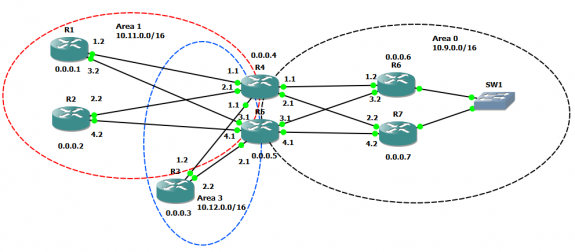

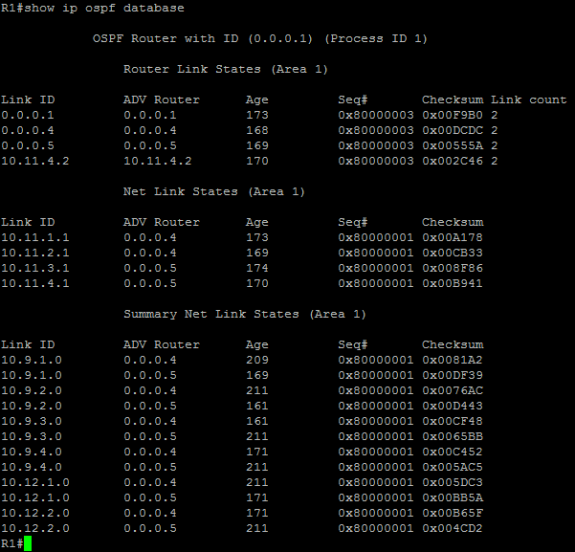
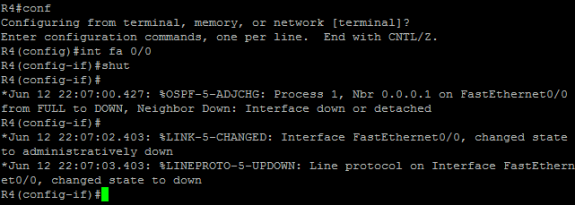
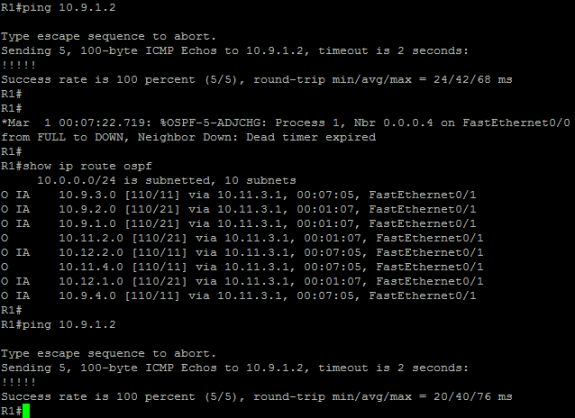

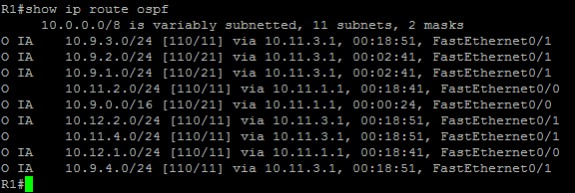



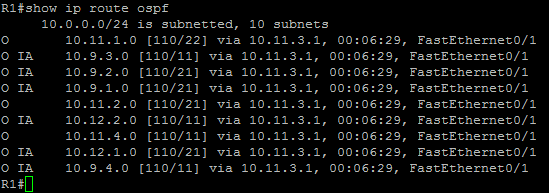


 Twitter
Twitter LinkedIn
LinkedIn Youtube
Youtube RSS
RSS
Pingback: Humair’s Blogs » Blog Archive » Multi-Area OSPF in a Mixed Cisco and Dell Force10 Environment